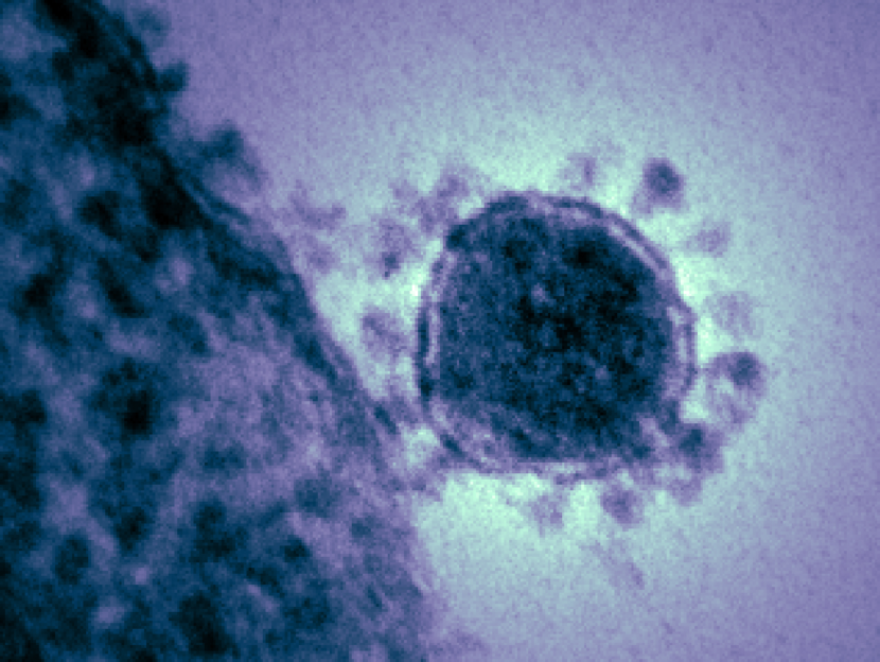A Seattle-Tacoma airport traveler became ill last week with a confirmed case of the new virus that public health officials around the world are tracking. It raised flags for Alaska’s public health officials.
State epidemiologists are alerting the public and health care workers about what to watch for and what to do. Most of the advice is the same as for regular flu season.
“We’re watching very carefully to see how this infectious disease, this novel coronavirus, acts,” said Louisa Castrodale, an epidemiologist with the infectious disease program at the state Department of Health and Social Services. “Is it something that is acting similarly to the other novel coronaviruses that have happened? And hoping to pass that information on widely when new information is known.”
It’s novel, because it’s new. Or, at least, scientists just identified it in December. And it’s a “corona” virus because it has crowny spikes. It looks sort of like the sun.
Symptoms include cough, fever and trouble breathing, similar to other known coronaviruses that range from the common cold to SARS. This one is spreading from person to person, but it’s unclear how easily, according to the Centers for Disease Control and Prevention.
The outbreak of this new virus began in the major Chinese city of Wuhan. So far, more than 800 people have gotten sick and at least 25 have died. Authorities there have shut down public transit to contain it. The SeaTac traveler came from Wuhan.
“Having it hit so close to home in Seattle — we’re only another plane ride away and I know there’s a lot of traffic, international, through Anchorage,” said Charlee Gribbon, infection preventionist at Bartlett Regional Hospital.
She’s getting updates from state and federal epidemiologists on the new virus. Gribbon said the risk of an outbreak in Alaska doesn’t change much for hospital visitors and employees. They’re taking the same precautions as they would during the flu season.
“The flu makes people sick, and it causes a lot of deaths over the year. So, I’m more concerned with keeping control over the flu,” she said.
That means giving masks to visitors who are coughing, keeping hands clean and isolating certain patients. Hospital staff have gear they can use ranging from basic masks to stuff that looks like a biohazard suit in the movies.
Some things have changed since the new outbreak.
“So we do ask everybody of their travel history,” she said. “There’s a whole long list of triage questions. Our nurses even ask if you’ve had a flu shot, so it’s quite intense. When you come in, you get a ton of questions.”
Suspected cases get reported to the state. Right now, only the CDC is able to test for it. So if the hospital suspected it had a case, they could collect things like spit or blood and send it to Atlanta for testing.
Gribbon said there’s regular staff training on how to handle a potential outbreak. That said, she only knew of one case at Bartlett that triggered a hospital response over and above business as usual. It was a little before her time at the hospital, during the 2003-2004 SARS scare. SARS was another respiratory virus that spread around the world and killed 774 people.
“Oh, it was quite an event,” said Jan Beauchamp, Bartlett’s infection preventionist at the time.
She remembered it was an elderly Canadian woman. She had a layover in a SARS hot spot in Toronto, on her way to an Alaska cruise.
“When she was on her way to Skagway, she became ill and they transferred her off the boat and to Bartlett hospital,” Beauchamp said.
Her fever, pneumonia-like symptoms and travel history fit what the CDC said to look for. When the CDC test results came back, it wasn’t SARS, Beauchamp said. So, Juneau didn’t have a SARS outbreak. Or an outbreak of whatever pneumonia-like bug the cruise ship passenger did have.
“We were in good shape when it all happened ‘cause that was my job. I was anticipating that eventuality could happen,” Beauchamp said. “And having so many people come visit us from all over the world and cruise ships in the summertime is you know, it’s always a potential public health situation. So we’re vigilant and cautious.”
A CDC team is in Washington state monitoring the case identified there, the first confirmed in the United States. Health officials identified him as a resident of Everett, Washington. He returned to the U.S. on Jan. 15. The CDC announced Friday it had confirmed a second travel-related case in the United States in Illinois.
For now the CDC considers the risk to the general American public low.


